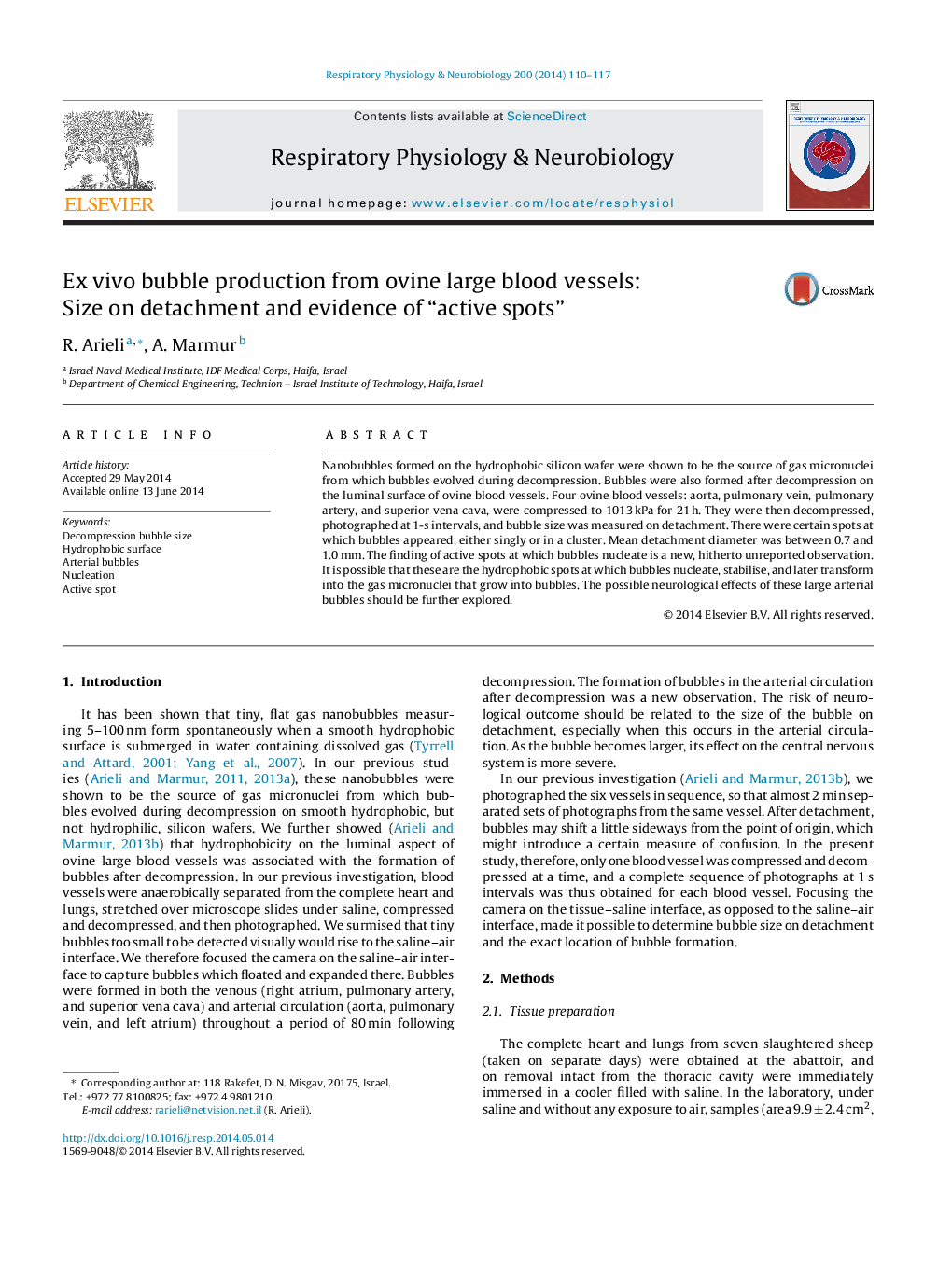| کد مقاله | کد نشریه | سال انتشار | مقاله انگلیسی | نسخه تمام متن |
|---|---|---|---|---|
| 2847004 | 1571328 | 2014 | 8 صفحه PDF | دانلود رایگان |
• Nanobubbles formed on blood vessels become gas micronuclei and decompression bubbles.
• Blood vessels exposed to 1013 kPa for 21 h were then photographed at 1-s intervals.
• Bubbles formed on the blood vessels, and grew until detachment.
• Bubble diameter on detachment may predict a serious effect of these arterial bubbles.
• Bubbles nucleate at a number of distinct active spots on the blood vessels.
Nanobubbles formed on the hydrophobic silicon wafer were shown to be the source of gas micronuclei from which bubbles evolved during decompression. Bubbles were also formed after decompression on the luminal surface of ovine blood vessels. Four ovine blood vessels: aorta, pulmonary vein, pulmonary artery, and superior vena cava, were compressed to 1013 kPa for 21 h. They were then decompressed, photographed at 1-s intervals, and bubble size was measured on detachment. There were certain spots at which bubbles appeared, either singly or in a cluster. Mean detachment diameter was between 0.7 and 1.0 mm. The finding of active spots at which bubbles nucleate is a new, hitherto unreported observation. It is possible that these are the hydrophobic spots at which bubbles nucleate, stabilise, and later transform into the gas micronuclei that grow into bubbles. The possible neurological effects of these large arterial bubbles should be further explored.
Journal: Respiratory Physiology & Neurobiology - Volume 200, 15 August 2014, Pages 110–117
